If you run with a group or a running partner, it might be helpful to note each others running form. There are some things that we can work on and fix or minimize to make us less prone to injury. There are also things that we should leave alone because if we try to alter our form, it may LEAD to injury.
Example: Ted and I were running the other day and I was behind him. I noticed a slight “wiggle out” of his left knee. I studied it for a while to make sure I wasn’t seeing things and sure enough, his right leg landed firm while his left leg did some kind of a …..well, WIGGLE before landing. I told him about this and he said he has the same problem when riding the bike. His left knee tends to jut out. Consequently, Ted sometimes suffers left knee pain.
Can it be fixed? Not sure but at least he is aware of it so when he gets tired, he can focus on his foot fall and not get too lazy with that leg. When we begin to tire, our form gets sloppy and if there is a weakness, that’s what tends to get over emphasized and we suffer pain. Helping each other be aware of what might be causing aches or pains is the first step in minimizing injury.
Speaking of injury, I’m on the down list this week due to hamstring pain and ankle zingers. Even though this down time during these critical training weeks make me nervous, I don’t want to risk going into a weekend running 39.3 miles in 2 days with any pain. Take care of it now and continue training for Disney come the weekend.
Have you ever had anyone critique your running form?
Is there anything about your running form you are aware of and would like to change?
Gluten Free Baking
To understand gluten free baking, it’s advantageous to understand what gluten is and how it works in the baking process. We won’t go into all that here but to learn more, Susan Schultz presents a thorough description in AmericanCakeDecorating.com “Gluten-Free Flour Options”,
There are many flours to choose from when baking which might include rye, corn, barley, oat but they are not all gluten free. Some alternative flours include spelt, farro, triticale, all part of the wheat family and also, while not as strong as typical wheat flour, can form some gluten.
Other options for gluten free baking:
Amaranth: slightly sweet and nutty.
Buckwheat: Not wheat at all but a relative of rhubarb, offering a strong, distinctive taste with a nutritionally balanced protein.
Quinoa: A seed flour high in healthy fat and lysine. Refrigeration is a must for this grain due to that high fat content. Quinoa flour is strong, bitter and typically used in small amounts to add nutrition to the recipe.
Other flours on Susan Schultz’ list include: millet, flaxseed, corn flour/cornmeal, potato, soy, rice, sorghum, chickpea, and almond.
In the following recipe,
I used sorghum, almond, and coconut flours with xanthan gum.
Sorghum: high protein with neutral flavor. It produces a dry more crumbly baked good.
Almond: High fiber, high fat that adds moisture, flavor, texture and nutrition value to the recipe.
Coconut: High fiber with a very mild, slightly sweet coconut taste.
Xanthan gum is used as a stabilizer, a binder. If it’s not used, the cookie may end up as a pile of crumbs. Too much xanthan gum can produce a metallic aftertaste so best to err on the low side.
From GlutenFreeGoddess.blogspot.com.au, two Gluten-Free Flour Blends:
1. For moist breads, muffins, cakes, cookies and cupcakes.
- 1 cup sorghum flour or brown rice flour
- 1 cup tapioca starch, corn starch or potato starch (NOT POTATO FLOUR)
- 1/2 cup almond flour, gluten-free millet, or gluten free buckwheat flour
- 1 tsp xanthan gum
2. For heartier breakfast muffins, cookie bars, and breads
- 1 cup sorghum flour or brown rice flour
- 3/4 cup potato starch, tapioca starch, or corn starch
- 1/2 cup gluten free millet flour
- 1/2 cup gluten free buckwheat flour or gluten free cornmeal
- 1/4 cup gluten free quinoa flour or almond flour
- 1 1/2 tsp xanthan gum
And FINALLY, my recipe for GLUTEN FREE GINGERSNAP BUTTONS
*These will cool down to a firm, crisp cookie. If you put them in a bag, the next day, the flavor will be more pronounced and they will have softened. Alternatively, roll the dough flat or flatten the cookie to a thin disk. Makes approximately 24 to 32 small cookies
- 1 cup sweet sorghum flour
- 1 cup coconut flour
- 1/2 cup almond flour
- 1 tsp xanthan gum
- 1/4 tsp salt
- 1 tsp cinnamon
- 1 tsp ginger
- 1 tsp allspice
- 1/4 tsp ground clove
- 1 cup Ricemellow creme *this is a gluten free, vegan friendly “marshmallow” cream
- 4 1/2 TBS unsalted butter, room temperature
- 1/3 cup granulated sugar
- 1/3 cup brown sugar
- 1/4 cup unsulfured molasses
Preheat oven to 350 F . Line baking sheets with parchment.
Mix the dry ingredients from the flours to the spices in a medium bowl.
Beat well until light the Ricemellow creme to the molasses.
Fold the flour into the sugar mixture until incorporated. The dough will be thick and slightly crumbly but should hold together.
Form small balls or roll out dough on a floured surface (use rice flour for rolling). If forming small balls, flatten down with a fork.
Bake for 12 – 15 minutes.
Enjoy plain or drizzle with powdered sugar mixed with water or milk.
Do you bake gluten free?
What’s your favorite gluten free flour blend for delicious cookies?

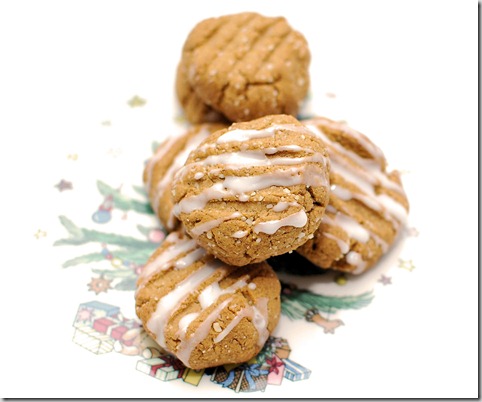
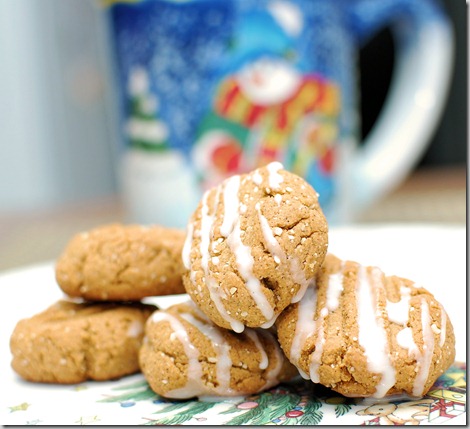
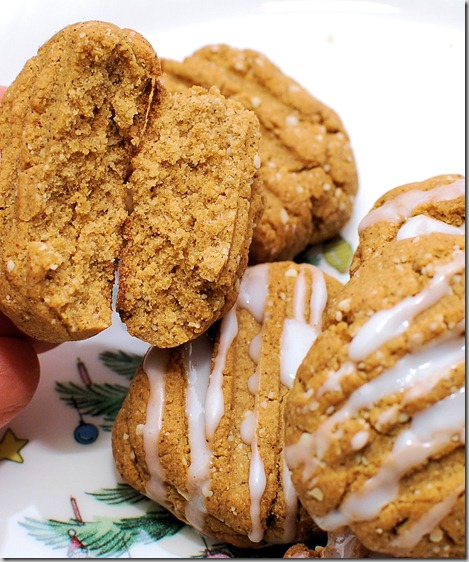
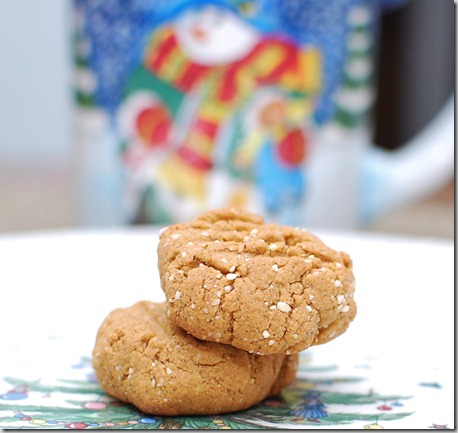
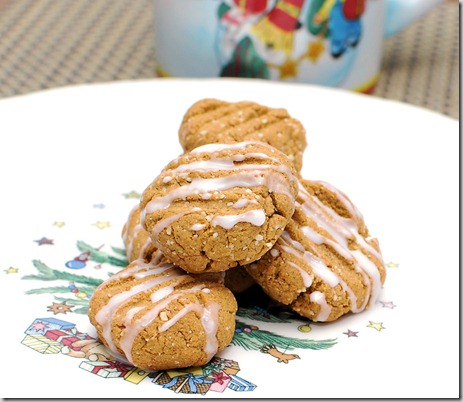

I could really use a running analysis. I’m the typical picture of “this is what I think I look like, but this is what I REALLY look like”. 🙂
I have never had my gait analyzed, but I know it altered after I hurt my back and having the subsequent nerve damage in my left thigh. One of the reasons I just really don’t run any more. It hasn’t affected my biking as much, though, which is good!
I do a lot of gluten free cooking. I feel much better not eating the gluten, although I do still loves me some bagels! 😀